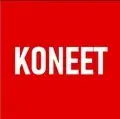“`html
Thinking About Buying a Used Roll Forming Machine?
If you’re exploring the possibility of purchasing a used roll forming machine, welcome to a world of endless opportunities—and, admittedly, a few potential pitfalls. Whether you’re an entrepreneur setting up your first manufacturing unit, a seasoned factory owner looking for a cost-effective machinery update, or simply curious about metal forming processes, you’ve landed in the right place.
In this article, I’ll walk you through everything there is to know about buying a used roll forming machine. From understanding what roll forming machines do to assessing their condition, evaluating pricing, and avoiding common mistakes, you’ll leave with all the tools you need to make a confident, informed decision.
What is a Roll Forming Machine, and Why Do You Need One?
Let’s start with the basics. A roll forming machine is a piece of equipment that uses a continuous bending process to shape metal strips into various profiles and forms. Think of it like origami—but with sturdy sheets of steel or aluminum. These machines are critical in industries like construction, automotive, and roofing, where custom-shaped metal components are in high demand.
Why buy one? With a good roll forming machine, productivity soars, waste reduces, and your operation becomes cost-efficient. But buying a used unit rather than a brand-new one can save you a significant amount of money—sometimes up to 50%, depending on the machine’s condition!
Key Advantages of Buying Used Roll Forming Machines
So, why go used? Beyond the obvious cost benefits, purchasing a pre-owned roll forming machine comes with a host of advantages, including:
- Immediate Availability: While new machines may involve long lead times due to manufacturing and shipping, used machines are often ready for pickup or delivery right away.
- Lower Initial Investment: You get the same functionality at a fraction of the new-machine cost.
- Proven Reliability: The machine has already been broken in, so you’ll know it works under real-world conditions.
- Environmental Benefits: Giving a machine a second life reduces waste and promotes sustainability in manufacturing.
Common Questions When Buying a Used Roll Forming Machine
Buying machinery might seem straightforward, but the reality is, you have to consider multiple factors to avoid regrets. Here are the most frequently asked questions—and the answers that buyers like you need to know.
1. What Should I Look For in a Used Roll Forming Machine?
Before jumping into a purchase, here’s what you need to inspect:
- Condition: Check for wear and tear. Pay special attention to the rollers, gearbox, and electrical system.
- Dimensions and Specs: Ensure the machine meets your production needs in terms of width, thickness, and material type.
- Manufacturer Support: Is the brand still around, and can you get replacement parts easily?
- Testing: Always ask to see the machine in action. Words on a sales brochure aren’t enough—only a live demo will reveal true performance.
2. How Do I Evaluate the Price of a Used Roll Forming Machine?
Determining the fair market value of a used machine depends on these factors:
- Age: Older machines are cheaper but may lack modern features.
- Usage History: Machines that have had minimal use have higher resale values.
- Brand: Top-tier brands like Bradbury, MetalForming, or Samco build machines that retain value better over time.
- Customizations: A machine with unique modifications may cost more upfront—but ensure the added features align with your needs.
Marketplaces like Machinery Trader or auction sites such as IronPlanet can help you explore price averages for similar machines.
3. Where Can I Find Used Roll Forming Machines for Sale?
Start your search in the following places:
- Specialized Dealers: Companies that exclusively sell pre-owned manufacturing equipment often refurbish machines to near-new conditions.
- Auction Websites: Online auctions are a treasure trove for snagging bargains, though due diligence is critical here.
- Business Liquidations: When companies shut down or switch industries, entire fleets of roll forming machines often go on sale.
- Industry Forums: Websites or Facebook groups can connect you directly with sellers in your field.
4. Should I Refurbish the Machine After Purchase?
It depends. If the machine is in good working condition, you might not need to make immediate changes. However, for older machines, a bit of refurbishment—upgraded electronics, new tooling, or roller replacements—can extend its life significantly. Budget for these upgrades before purchasing to ensure your operation stays on track.
Red Flags to Watch Out For
Buying used machinery always carries some risks. How do you spot a dud from a diamond in the rough? Here’s a quick checklist of red flags:
- Missing or incomplete maintenance records.
- Signs of rust or corrosion, particularly on the rollers or frame.
- A reluctance from the seller to demonstrate the machine in use.
- Unreasonably low prices. If it seems too good to be true, it probably is.
Negotiating Tips: The Art of the Deal
Once you’ve found a machine that ticks all your boxes, it’s time to negotiate. Here’s how:
- Do Your Research: Walk into negotiations armed with knowledge about the machine’s fair market price.
- Be Polite but Firm: Build rapport with the seller, but don’t hesitate to point out flaws that justify a lower price.
- Ask for Extras: Sometimes sellers are willing to throw in spare parts, rollers, or even shipping to sweeten the deal.
Final Thoughts: Is a Used Roll Forming Machine Right for You?
At the end of the day, buying a used roll forming machine can be a fantastic investment if done right. The key is to arm yourself with knowledge, inspect the machine thoroughly, and choose a seller you trust. Remember, you’re not just buying equipment—you’re laying the foundation for a more efficient and profitable operation.
So, start exploring your options, ask the right questions, and roll (pun intended!) into this exciting new chapter with confidence. Happy shopping!
“`
